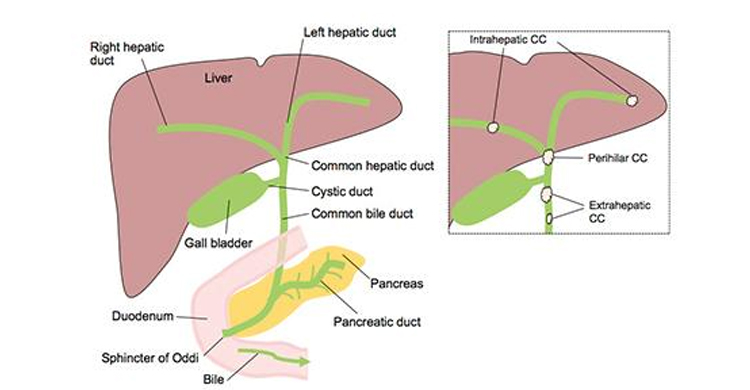Cholangiocarcinoma (Bile duct cancer), like any other cancer, leaves a person physically, mentally and emotionally drained. It has been mostly found to affect people above 60 years of age. The signs and symptoms associated are so common that very few people consult a physician. A delayed diagnosis implies delayed treatment. This goes on to aggravate and complicate the situation further. One needs to be a little alert. Any symptoms, no matter how common, should not be taken lightly. Look for the early signs and symptoms and bile duct cancer can be fully cured.
CHOLANGIOCARCINOMA IS A TYPE OF TUMOR THAT IS VERY DIFFICULT TO TREAT.
Surgery is often the first choice to treat bile duct cancer. The goal is to remove all the cancer. It is the only treatment that may cure people whose bile duct cancer has not spread.
In people whose cancer has spread, surgery may be done to help relieve symptoms. This may be the case for cancer that can’t be fully removed. This is called palliative surgery. It can help relieve pain and prevent complications.
- Removal of the bile duct: A small tumor that is only in the bile duct close to where it first comes out of the liver, is called perihilar bile duct cancer. For this cancer, a surgeon may remove the entire bile duct. The surgeon will make a new connection to the small intestine. This lets the bile flow again. If the cancer has spread to nearby tissues, most often the liver, the surgeon may need to remove some of that tissue as well. The surgeon may also take out nearby lymph nodes and check them for signs of cancer.
- Partial hepatectomy:This is also called liver resection. For this surgery, the surgeon removes the part of the liver where the intrahepatic bile duct cancer is found. The cancer is in a bile duct that's inside the liver. This surgery may also be done if cancer is in the hepatic duct very close to the liver. A large or small part of the liver may be removed. The surgeon may also remove some nearby normal tissue to be sure that all the cancer is taken out.
- Whipple procedure:This is also called pancreaticoduodenectomy. If the bile duct cancer is in the part of the duct that's very close to the pancreas, you may need this surgery. For this procedure, the surgeon takes out the bile duct and the gallbladder, along with part of the pancreas, part of the stomach, and the first part of the small intestine.

